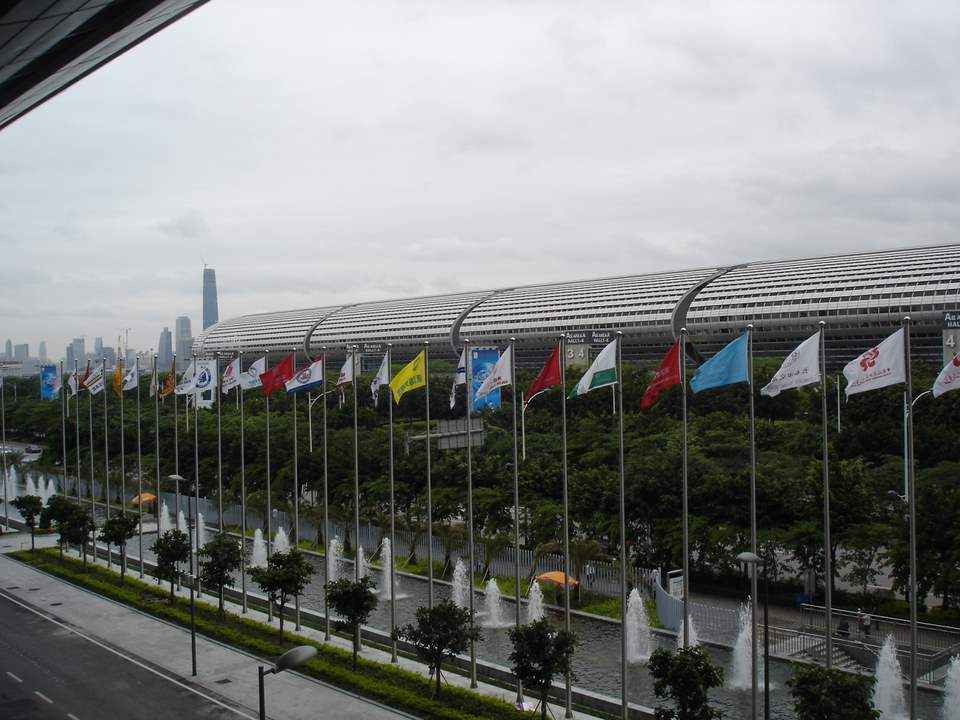Last Updated on

Canton Fair
Convention centers big enough to hold footballs stadiums made for displaying lots and lots of products.
The question: How Hard is it to Source Product from China?
Answer: It’s as easy as sending an email.
Really.
Now your product doesn’t have to be sourced from China.
You could source from India, the Philippines, USA, Mexico or practically any other country you can imagine.
From never having contact previously with a factory overseas, you can send an email requesting samples. If they look good, you can order more. Easy.
More barriers exist in our minds than actual physical barriers when it comes to separating nations.
It’s not always a good thing. You may feel that somedays you’re communicating more with people who live 8,000 miles away than with those in your own house.
But with email, it’s easier than ever before to start a business or add new products to an existing business.
Just make sure ever now and again to come up for air and talk to the people around you.
It really doesn’t take all that much time especially you’re trying to source only a product or two. If you have a tough time concentrating and are going after lots of different products and ideas, you’ll find yourself sending more than just a few emails.
The Old Way that Businesses Source Products from China is Giving Way to Something Awesome
In the past, you really had to have connections or go to one of the product fairs in Asia.
The product fairs are where factories set up booths to show off what they can do.
Visiting a booth, if you’re interested in the product, you get their “name card” aka business card, inspect samples, and perhaps even place an order.
A number of shows are held every year.
The Canton Fair ranks as the biggest of them all.
To grasp the gargantuan size of the Canton Fair and buildings, picture a place that would be large enough to house and sell football stadiums inside. The place is massive.
Manufacturers from all over the world come to display their products there, a lot of businesses (I mean a whole lot) still visit the Canton Fair to source product, but that involves hotels, airfare, coordinating all the in-country travel, customs, visas, language challenges, and more.
It doesn’t have to be that hard.
In fact, I’ve found it to be more productive to just get things done by email than by walking the shows at the Canton and Hong Kong fairs.
So how do you Source Product from China the Smart way?
Below are 7 Tips you can use when sourcing product:
1. Source Products the Smart Way
If you want to be smart about it, don’t do the dumb things other sellers do
Here are the ways that people are dumb about it (the list is by no means complete):
- Treating your supplier with contempt, arrogance, and just plain unprofessionalism.
- Demanding that everything be free.
- Trying to be so cheap that you imply that the factory cut corners or they do it because you’ve put too much pressure on them.
- Customizing the product so much that the factory has no idea what you’re talking about or what to do.
- Demanding work during Chinese New Year.
- Insulting their work or their country
By going to the shows in Asia, I’ve seen a lot of plan dumb behavior from buyers.
Don’t let it be you, and you’ll be better off with a better relationship with your factory.
I’ve seen examples of smart work with manufacturers.
If you work for a win-win for you and the factory, you’re working smart. If you say, “I want to help increase your business” you’re on the right track. Drop the ego, and work together they appreciate it more, and you’ll get better business.
Treat your contacts with the utmost respect. They value that, and if you think about it, you probably do as well.
2. Use the Right Resources
To find your potential supplier, you can either search for a factory website or go to a listing service directory of potential customers.
You’ll have more luck in the listing directories for sure.
There are many directories I’ve used. Alibaba.com is a great one and one of the best known, but it’s not the only one. In fact, you can find more unique products by going where the masses aren’t looking.
By using Alibaba to contact the factories, you let your fingers do the walking rather than your feet trudging down the corridors of the fairs for a weeks on end.
3. Make Sure You’re Working with the Source
Working by email does pose a challenge: How do you know you’re working with the source?
Many factories will post pictures of stuff that they’d like to make or that they know they have access to but don’t really make. They’ll post those pictures on Alibaba and the other directories.
I once was trying to source a product, the factory had posted pictures of the product and they were the only one that were even close to what I wanted. I just happened to be in China at the fairs and decided to go visit the factory.
When I got to the factory, guess what I saw, rows and rows of key chains. I wasn’t there for key chains. It was obvious that key chains were their main business not the products I wanted.
We looked over what they had and politely excused ourselves.
When sourcing, you need to be careful to go to the source. You don’t want a key chain manufacturer trying to make (or have someone else make then resell) electric blankets (or whatever you’re after).
Trading companies are everywhere.
With the world becoming more flat, factories won’t need trading companies as much, but they’re still there and in between you and the real manufacturer.
A trading company will often take care of details working with buyers and factories. You may not even know that you’re buying from a trading company.
Their service was needed more in the past, but factories and buyers are becoming wise.
One way to tell if you’re potentially going to work with a trading company is to get their product catalog emailed to you or look at their product selection online. If they say the manufacture furniture for example but you see mostly key chains, take it as a warning that you’re not working with the source.
4. Get Pictures of Samples Before Paying to have them Sent to You
Once you’ve found a good supplier, it pays to have them send pictures to you of the samples they’re about to mail.
This isn’t the stock photography with a nice white background. Ask for a real picture from someone in their factory.
Remember, your contact probably speaks 2, 3 or 4 languages. A lot can get lost in the translation.
Pictures are worth a thousand words and can help clear up misunderstandings.
Before you pay for a sample to be sent to you, ask them to take pictures of the product. It’s saved me a couple times.
5. Ask for Additional Samples
Unless your products are huge, ask for a couple samples of the same item.
Why? You just might want one of those samples to be your tear-apart.
You’ll want one sample to put through the ringer to see how sturdy it is. You may want to cut it up to inspect the construction.
You may want a separate sample for safety testing.
The factories may also have items that are related, and they will be happy to send a couple different samples because it might mean more business for them.
As long as they’re shipping a box to you, fill it up, and make it count.
6. Send Simple, Clear Emails
Wouldn’t we all like to receive concise emails!
Don’t give your overseas contacts paragraphs upon paragraphs to read.
Make your points simple, straightforward, and short.
7. Understand Tariffs for your Country
You may have to pay an import tax on the products you’re importing.
You may have no tax, a 3%, 17%, anywhere in between or more.
It varies, but in the US, make sure you have the right harmonizing code.
Take advantage of these tips to help you find awesome products.

